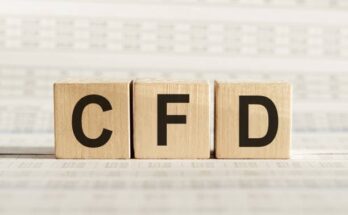Diving into the world of CFD trading can be both exhilarating and daunting. It’s like stepping into a vast ocean, full of potential but also challenges. One of the critical aspects of navigating this ocean successfully is having a solid trading strategy. But how do you know if your strategy is really going to work? That’s where backtesting comes in. It’s like a compass, guiding you through the treacherous waters of financial markets. Let’s explore how you can backtest your CFD trading strategy to assess its effectiveness, with a focus on the Markets platform, which is a CFD platform that offers a wide range of tools and resources for traders.
Understanding Backtesting
Backtesting is the process of testing a trading strategy on historical data to see how it would have performed in the past. It’s a way to evaluate the potential profitability and risk of your strategy without risking real money. By backtesting, you can identify any weaknesses in your strategy and make adjustments before you start trading with real capital.
Why Backtest Your CFD Trading Strategy?
Backtesting is essential for several reasons. First, it helps you understand how your strategy would have performed in different market conditions. This is crucial because markets are always changing, and a strategy that works well in a bull market might not perform as well in a bear market. Second, backtesting allows you to fine-tune your strategy to improve its performance. You can adjust your entry and exit points, risk management rules, and other parameters to optimize your strategy. Finally, backtesting gives you confidence in your strategy. When you see that your strategy has performed well in the past, you’re more likely to stick to it when you start trading with real money.
Getting Started with Backtesting on Markets
To backtest your CFD trading strategy on the Markets (It is also known as “اسواق” in Arab.) platform, you’ll need to follow a few steps. First, you’ll need to choose the markets you want to trade. This could be stocks, forex, commodities, or indices. Once you’ve selected your markets, you’ll need to gather historical data for these markets. Markets provides a comprehensive database of historical price data that you can use for backtesting.
Choosing the Right Data
When choosing data for backtesting, it’s important to select a time period that is representative of the market conditions you expect to encounter. For example, if you’re trading a strategy that relies on high volatility, you might want to backtest your strategy during periods of high market volatility. Similarly, if your strategy is designed for a specific sector, like technology stocks, you should backtest it using data from that sector.
Setting Up Your Backtest
Once you have your data, you’ll need to set up your backtest. This involves defining your trading strategy’s rules, such as your entry and exit criteria, and any risk management parameters. You’ll also need to decide on a time frame for your trades, such as daily, weekly, or monthly. Markets offers a user-friendly interface that allows you to easily set up your backtest and run simulations.
Analyzing the Results
After running your backtest, you’ll receive a report that shows how your strategy would have performed. This report will include key performance metrics, such as net profit, maximum drawdown, and return on investment. It’s important to analyze these results carefully to understand the strengths and weaknesses of your strategy. Look for any patterns or trends in the data that might indicate areas for improvement.
Refining Your Strategy
Based on your backtest results, you may need to refine your strategy. This could involve adjusting your entry and exit points, changing your risk management rules, or even completely changing your strategy if it’s not performing as expected. Remember, the goal of backtesting is not just to validate your strategy but also to improve it.
Staying Updated with Market Conditions
Markets is constantly evolving, and so are the tools and resources available on the Markets platform. It’s important to stay updated with the latest market conditions and platform features to ensure that your backtesting remains relevant and effective. This might involve regularly updating your historical data, adjusting your strategy based on new market insights, or even learning new trading techniques.
Conclusion
Backtesting your CFD trading strategy (It is also known as “استراتيجيات تداول CFD” in Arab.) is a crucial step in the trading process. It allows you to assess the effectiveness of your strategy and make any necessary adjustments before you start trading with real money. By using the Markets platform, you have access to a wealth of resources and tools that can help you backtest your strategy effectively. Remember, the key to successful trading is not just having a good strategy but also being willing to test, learn, and adapt. So, dive into the world of backtesting and start refining your CFD trading strategy today.




